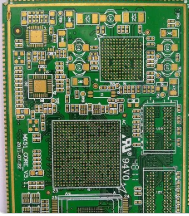When emphasizing thin and small consumer electronics, mobile devices, smart phones, and even wearable devices in recent years. As for the rise of the Internet of Things (IoT), the use of FPC soft boards, HDI and even Any Layer HDI high-density PCB; advanced PCB manufacturing process This brings extremely high technical thresholds and yield tests, and also drives equipment suppliers to update and evolve from laminating machines, screen printing machines, drilling machines to AOI equipment...
The traditional rigid board (RPCB) due to its hard material limits the internal volume and shape design of the terminal product, and flexible printed circuit boards (FPC, referred to as FPC soft boards) have emerged as the times require. According to the number of layers, FPC soft boards are divided into non-adhesive FPC soft board (2 Layer FCCL) and glue-free FPC soft board (3 Layer FCCL). The former is directly composed of soft copper foil substrate (FCCL) and soft insulating layer. In combination, it has the advantages of high heat resistance, good flexural resistance, and good dimensional stability, but the cost is relatively high, and higher-end applications will use 2L FCCLFPC soft board; 3L FCCL uses soft copper foil substrate and insulation The layer is laminated through Epoxy glue, which has a low cost and is used by most.
The advantages of FPC soft boards include lighter weight, thinner, flexible, three-dimensional wiring by changing the shape according to the space, increasing the wiring density of the system and reducing the volume of the product. At present, FPC soft boards are widely used in computer and peripheral equipment, communication products, digital cameras, consumer electronics, automobiles, military and other fields, especially communication products and panels account for the highest proportion. Among them, communication products account for about 30%, followed by Panel with more than 20%, and PCs and peripherals accounting for 20%. The disadvantage is that it is easy to adhere to dust due to static electricity, and it is also easy to be damaged by falling or collision during the manufacturing process. At the same time, it is not suitable for connecting heavier components.

According to the product structure, the FPC soft board can be subdivided into:
1. Single Side: It is the most basic type of FPC soft board. A conductive layer is coated with an adhesive layer, followed by a dielectric layer.
2. Double Side (Double Side): Double side substrate is used and a layer of covering film is added, but because of the thicker thickness, the flexibility is slightly reduced, so the application field is slightly limited.
3. Multilayer: It is mainly composed of single-sided or double-sided boards. The conductive layers are connected by drilling holes; however, due to the greater number of layers, the flexibility becomes worse, and its application fields are relatively limited;
4. Rigid-flex board (Rigid-Flex): It is composed of multi-layer hard board plus single-sided FPC soft board or double-sided FPC soft board, which has the support of hard board and the flexibility of FPC soft board.
5. Such as single-layer two-sided exposed board (Double Acess), embossed board (Sculptural) and other special boards.
In addition, for the integration of mobile and wearable devices, LCP-FPC with low dielectric constant, high density multilayer FPC (High density multilayer FPC), optical waveguide FPC, waterproof FPC, transparent FPC, ultra-thin FPC, and 3D forming FPC have emerged., Integral molding FPC, Stretchable FPC, ultra-fine line FPC and other FPC products. For example, smart watches or smart bracelets use the bracelet body or strap structure to combine thin lithium polymer batteries, MEMS sensors, and FPC to be three-dimensionally folded and bent to embed them; there are also designs designed for automotive electronic environments. FPC for vehicles emphasizes the material characteristics of high shock resistance and high heat resistance.
In response to high-efficiency, high transmission rate and active thin design trends, high-speed connection interfaces such as USB 3.0/3.1/HDMI and other high-speed connection interface 5~10Gbps, to telecom and Netcom equipment require 20Gbps to meet the needs of optical fiber transmission and support high-speed transmission applications. FPC uses low dielectric constant liquid crystal polymer (LCP) material, and is supplemented by an ultra-thin copper foil material that has been rolled to a thickness of 6-9μm. It has reached support for transmission and reduced UHF transmission process. The skin effect (Skin Effect), while taking into account the needs of thinner.
Laser drilling sky eye through copper foil/FR4 to construct HDI giant tower
When mobile devices and tablet devices are moving towards high clock, multi-core and high performance, and product functions are becoming more diversified and complex, whether it is the number of electronic components used or the number of contact pins of a single component has also increased, and at the same time, it must be adapted to High-clock signal transmission requirements comply with electrical characteristics and consider signal impedance and avoid skin effect. In addition, in response to wireless network transmission, efforts must be made to improve RF signal optimization and avoid electromagnetic interference. More power layers and grounding must be added Layers, so that the wiring space and design of the circuit board inevitably move from the previous single-layer, double-layer, four-layer, and eight-layer to a multi-layer PCB board and even a high-density interconnect (HDI) PCB. .
HDI boards are manufactured using the build-up method (Build Up). Generally, HDI boards basically use primary build-up, and high-end HDI boards use secondary (or more than secondary) build-up technology, and use electroplating to fill holes and stack holes at the same time., Laser direct drilling and other technologies.